5. Disney’s Hollywood Studios (1989)
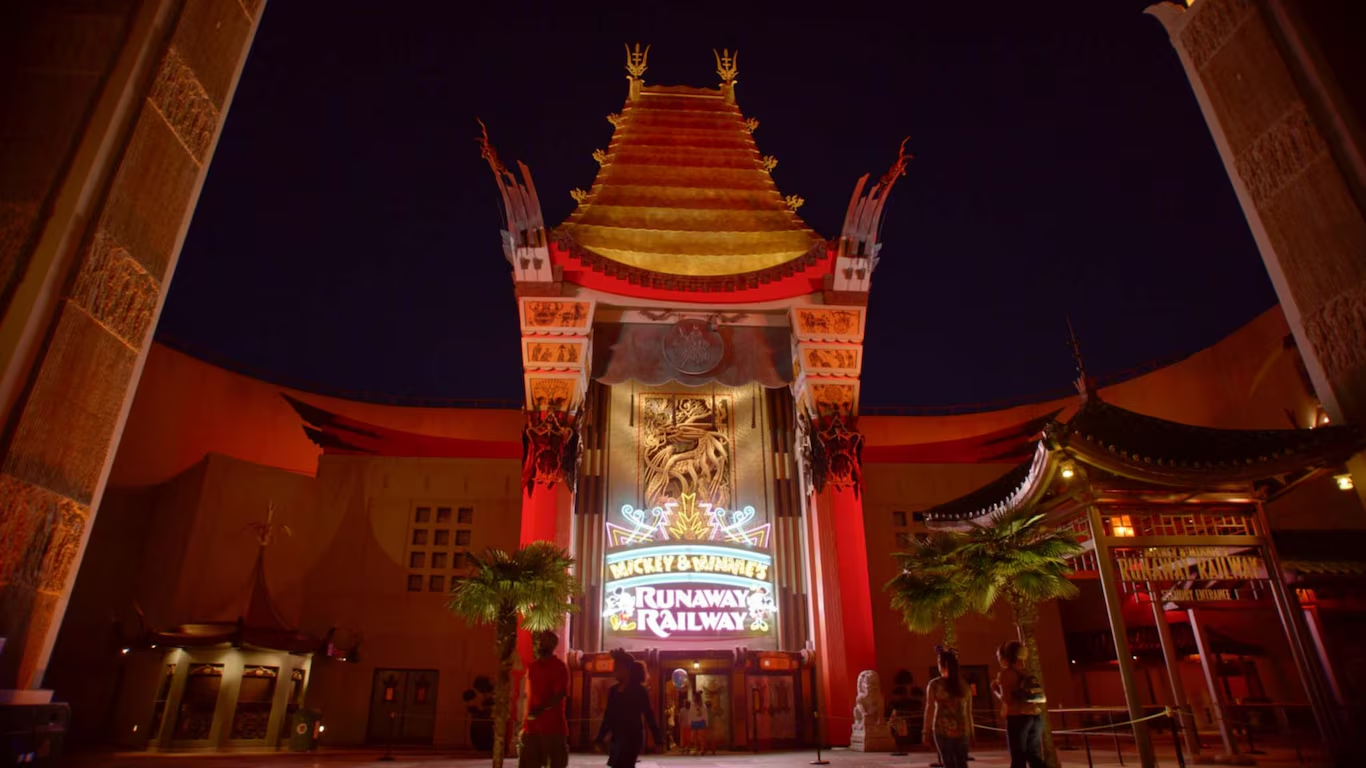
It hardly feels fair to track the “lands” of Hollywood Studios in the park’s early years. After all, it really wasn’t meant to be a “theme park” in the traditional sense. Actually, until just before it opened, the project was called the Disney-MGM Studio Tour, centered on the Declassified Disaster: The Backstage Studio Tour – a multi-hour, tram-and-walking tour through the very real (but very underutilized) production facilities Disney had built there. The more elaborate Hollywood Blvd., Lakeside Circle, and Backlot Annex were closer to a sections of a visitor’s center complex than themed ‘lands’ like you’d expect in a “Castle Park.”
But the Studios quickly recognized the need to pivot. Before the conclusion of its first calendar year, the New York Street sets had been annexed from the Tour and opened to pedestrian traffic. (A small cross street was re-stylized as San Francisco in 2004, turning the space into the Streets of America). It was merely an elaborate photo op, but the physical acreage was needed to absorb crowds. The opening of the Lost Legend: STAR TOURS solidified the formation of Echo Lake as a discrete “land,” followed by still more of the backlot opening up to pedestrians as studio facilities converted to theme park use (forming Mickey Ave. and Animation Courtyard).
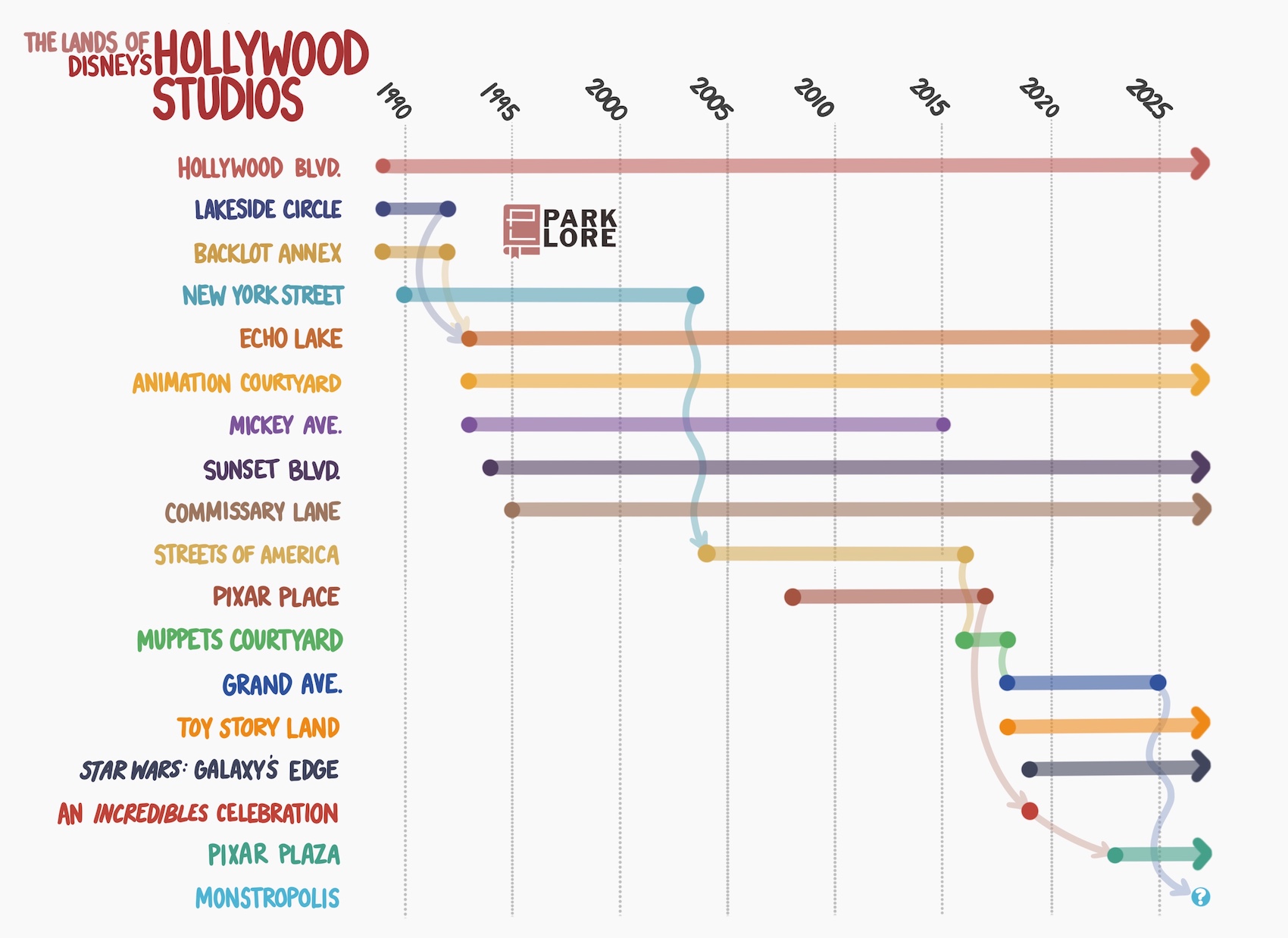
But it was really the opening of Sunset Blvd. in 1994 (five years into the park’s lifetime) that officially signaled that the Disney-MGM Studios would be a theme park proper, leaning into the strengths they’d highlighted with Hollywood Blvd.: “Disney style” immersive lands, albeit themed to historic Hollywood rather than Fantasy, Frontier, or Adventure. The park sort of clumsily balanced a front half of immersive Hollywood-stylized lands and a back half of studio-stylized catch-all plazas like Pixar Place (home to Toy Story Mania).
The next big “wave” of design ethos came by way of Toy Story Land and Star Wars: Galaxy’s Edge which – both figuratively and literally through a new logo – downplayed “Studios” and emphasized “Hollywood,” pointing toward this being a park of post-Wizarding World “Living Lands” where guests can step into the worlds of Disney + Pixar + Marvel + Star Wars – a trend that’ll continue with when the space that began life as New York Street, then became the Streets of America, then Muppets Courtyard, then Grand Ave. will become Monstropolis.
As those who visit often can attest to, it’s clear that this park has been volleyed back and forth between corporate priorities and quick-fix solutions since the day it opened. The result is a park that clearly wants to be home to “Living Lands,” but doesn’t know (or really, care) how that squares with portions devoted to classic Hollywood or beige soundstages and “studio” remnants. That’s why Hollywood Studios is filled with vestigial plazas, dead-ends, and mismatched components no one seems to be able to figure out what to do with.
6. Universal Studios Florida (1990)
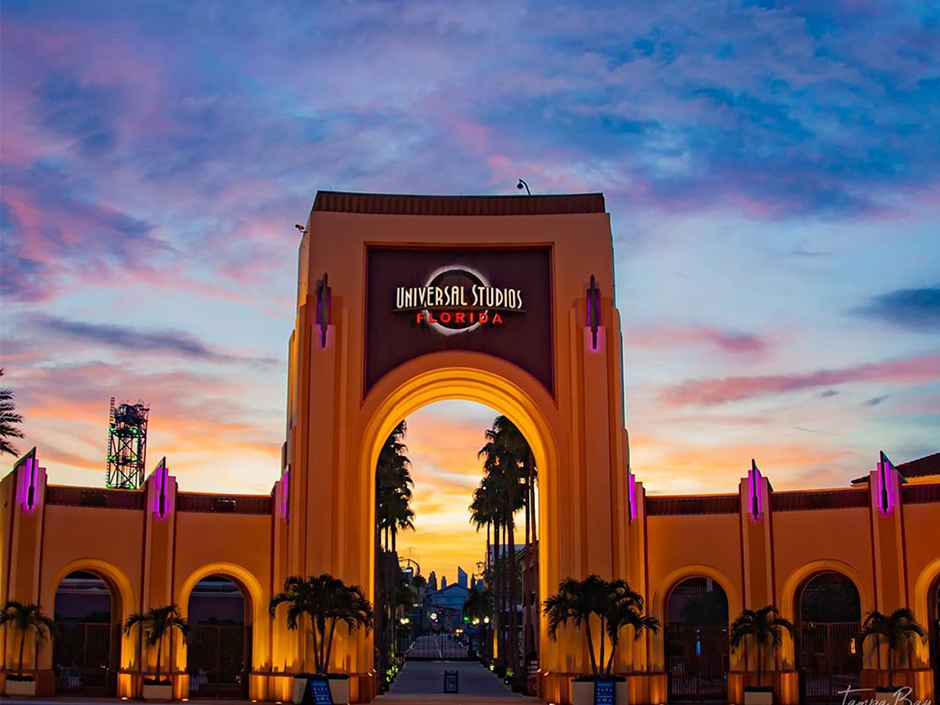
Universal Studios Florida opened just over a year after Disney’s competing studio park, but took the brief in an entirely different direction. Merging the modern concept of a theme park with Universal’s actual movie studio and production facilities in Hollywood, the Florida park was purpose-built with screen-ready regions stylized as New York, Hollywood, San Francisco, Amity (the New England town from Jaws), and more.
That actually gave Universal Studios a surprising amount of flexibility… something it needed badly when – heading into the New Millennium – it began an aggressive effort to replace its opening day rides with hotter, fresher intellectual properties. Universal got a lot of mileage from simply swapping the contents of giant soundstages hidden behind city facades, meaning that the park’s land lineup didn’t really need much changing themselves.
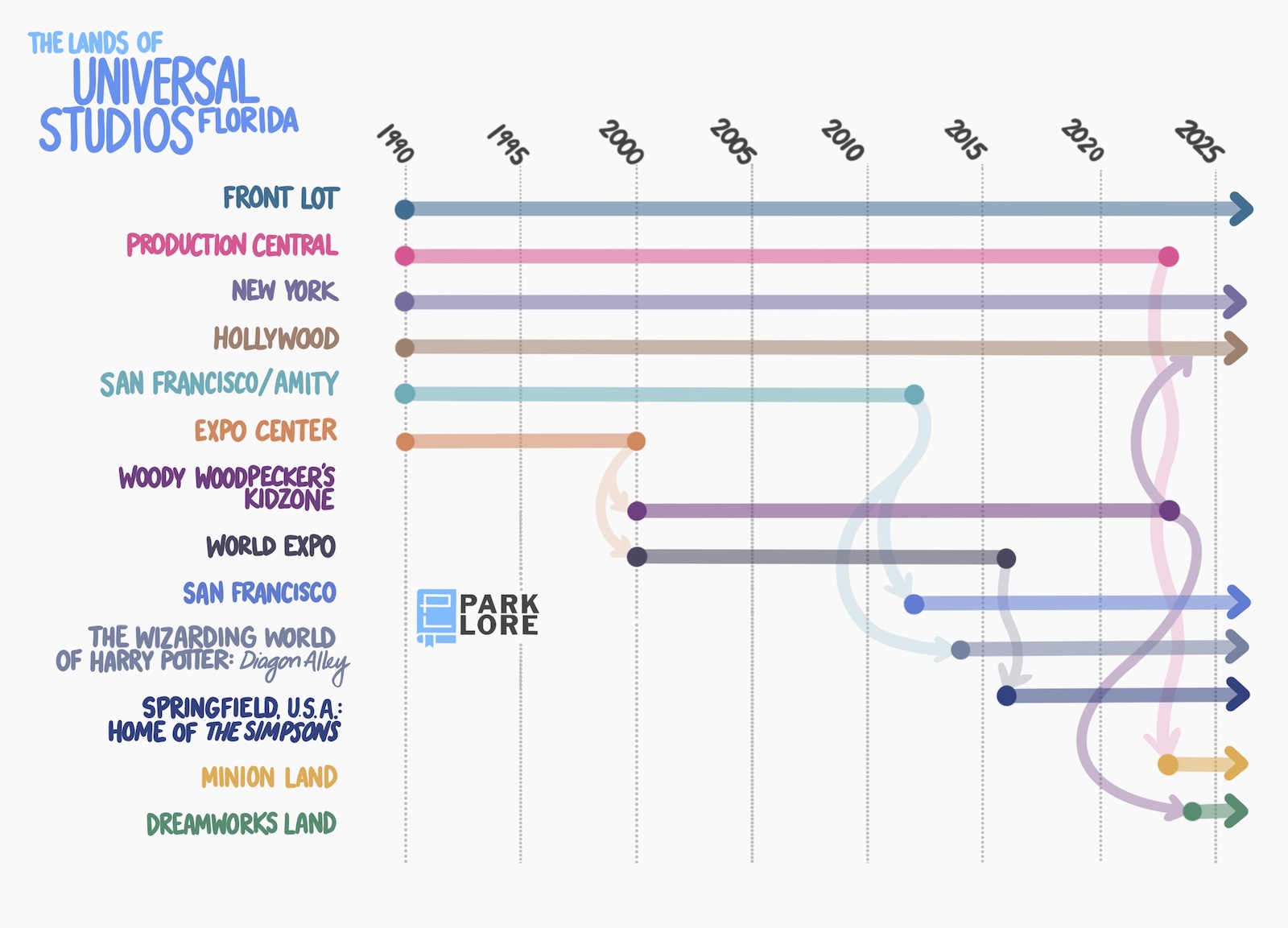
The first of Universal Studios’ lands to change was the broad Expo Center – home to the Lost Legend: Back to the Future – The Ride. In 2000, it was splintered into the international World Expo (still containing Doc Brown’s Institute of Future Technology) and Woody Woodpecker’s KidZone. Even though Back to the Future made way for The Simpsons Ride in 2008, it wasn’t until 2013 that World Expo itself became Springfield, U.S.A. The unusually-mixed San Francisco / Amity was splintered in 2012 into a standalone San Francisco and a London waterfront concealing The Wizarding World of Harry Potter: Diagon Alley.
More recently, there have been some somewhat “cheap and cheerful” changes to the park, like reverse engineering the soundstage-style entry land – Production Central – into a Minions Land. KidZone clung onto Woody Woodpecker, Curious George, and Fievel for a comically long time, only becoming a sort of lightly-decorated DreamWorks Land in 2024. The leaves the park with some broad, international “cityscapes,” but an increasing quantity of IP-specific zones that aren’t quite as flexible and timeless.
7. Disneyland Paris (1992)
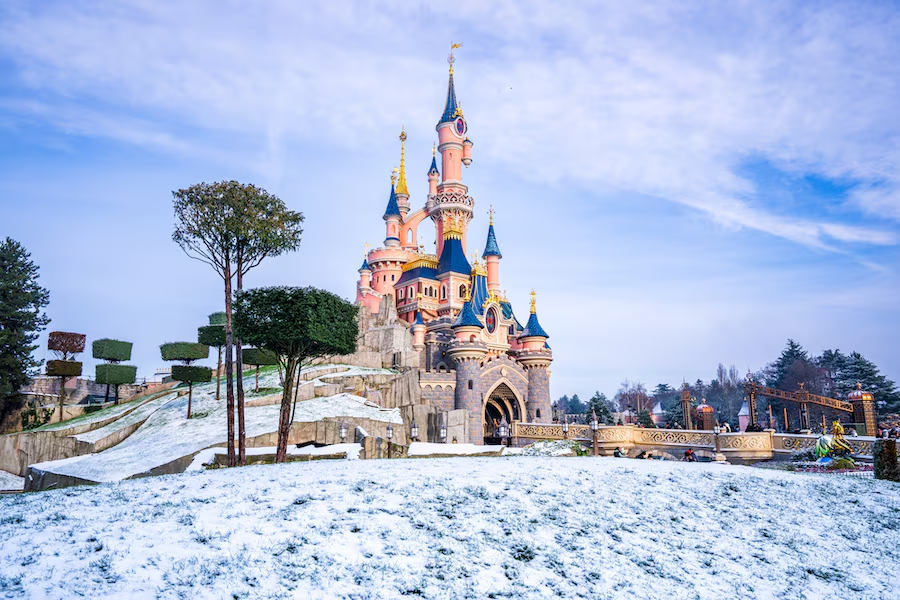
Ah, Disneyland Paris. Opened in 1992, the park (then known as EuroDisneyland) was intended to be the legacy project of then-CEO Michael Eisner. In many ways, it was – just not in the way anyone had hoped. Beautifully decadent, incredibly rich, and built by genuine artisans, Disneyland Paris was (and frankly, remains) the most beautiful “Castle Park” on Earth. It is luxurious and mature, representing the best of an increasingly-ambitious Walt Disney Imagineering, who wrapped each of its lands in their own “berm” and brilliantly tuned the very American concept of Disneyland to the wants of European audiences.
Unfortunately, Disney was a little too ambitious in its plans for the property, building six(!) gargantuan, sprawling hotels – in retrospect, an obvious misfire for a resort built just a train ride away from a global city like Paris. Altogether, the EuroDisney project collapsed financially, with Eisner noting in the mid-’90s that bankruptcy was on the table, that Disney might just close and abandon the park, and – most devastatingly – that he didn’t believe Disney should ever again spend the kind of money they’d spent in France. Cut to more than a decade of cop-outs, cancellations, and closures that changed Disney Parks forever justifiably leading many fans to believe that in a multiverse where Disneyland Paris never existed, Disney Parks are in a much, much better place.
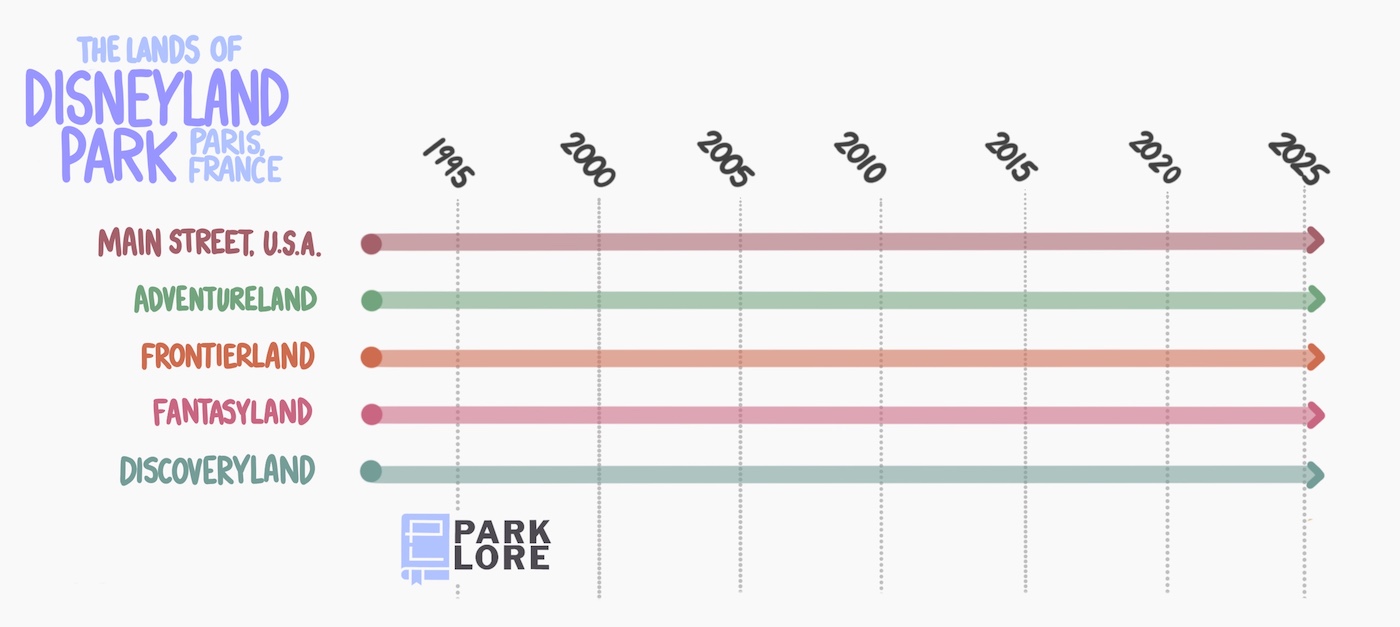
Anyway, “Parc Disneyland” is still an absolutely gorgeous park, made up of Main Street, U.S.A., Adventureland, Frontierland, Fantasyland, and the unique Discoveryland – a fantasy-inspired, gold-stylized version of Tomorrowland rooted in the writings of Jules Verne and H.G. Wells rather than the mid-century Space Age Tomorrowlands found elsewhere at the time. And in a first and only for this series, that’s that.
Disneyland Paris has neither opened, closed, nor renamed any land. In many ways, that’s a bad thing. Although the park is perfect in its way, it hasn’t received a serious new attraction since 1995 – thirty years ago – when Space Mountain: De la Terre á la Lune opened. Instead, all of Disney’s time, energy, and money has gone toward making the resort’s second gate even meet the bare minimum (see next page!), leaving Disneyland Paris frozen in time, locked in suspended animation, and desperately needing at least three or four new E-Ticket attractions to catch up to where it would’ve been otherwise.
8. Disney’s Animal Kingdom (1998)
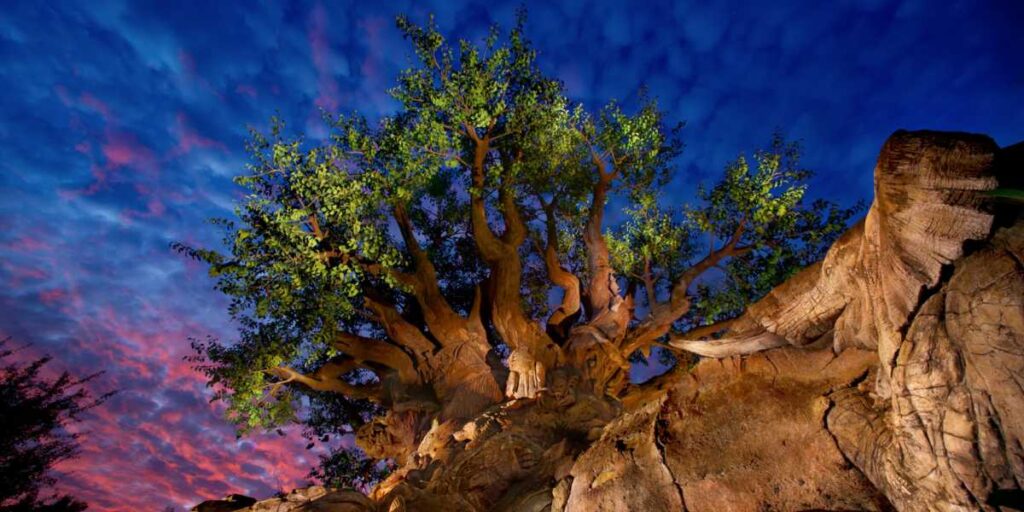
Disney’s Animal Kingdom opened in 1998 with six lands: The Oasis entry, Safari Village (the central island containing the Tree of Life), Africa, (later Rafiki’s) Planet Watch, Dinoland U.S.A., and the supposedly-temporary Camp Minnie-Mickey. Work was already underway on Asia, too, which would follow in a “Phase II” expansion in 1999.
Clearly, Cast Members got very tired of having to explain to guests that the park’s headlining attraction – Kilimanjaro Safaris – wasn’t in Safari Village. In 2000, it was renamed Discovery Island. But otherwise, the park stayed pretty consistent! Even the “temporary” Camp Minnie-Mickey survived for 15 years, closing in 2014 so that its real estate could be put to permanent use as the biggest thing to ever happen to Animal Kingdom – Pandora: The World of Avatar.
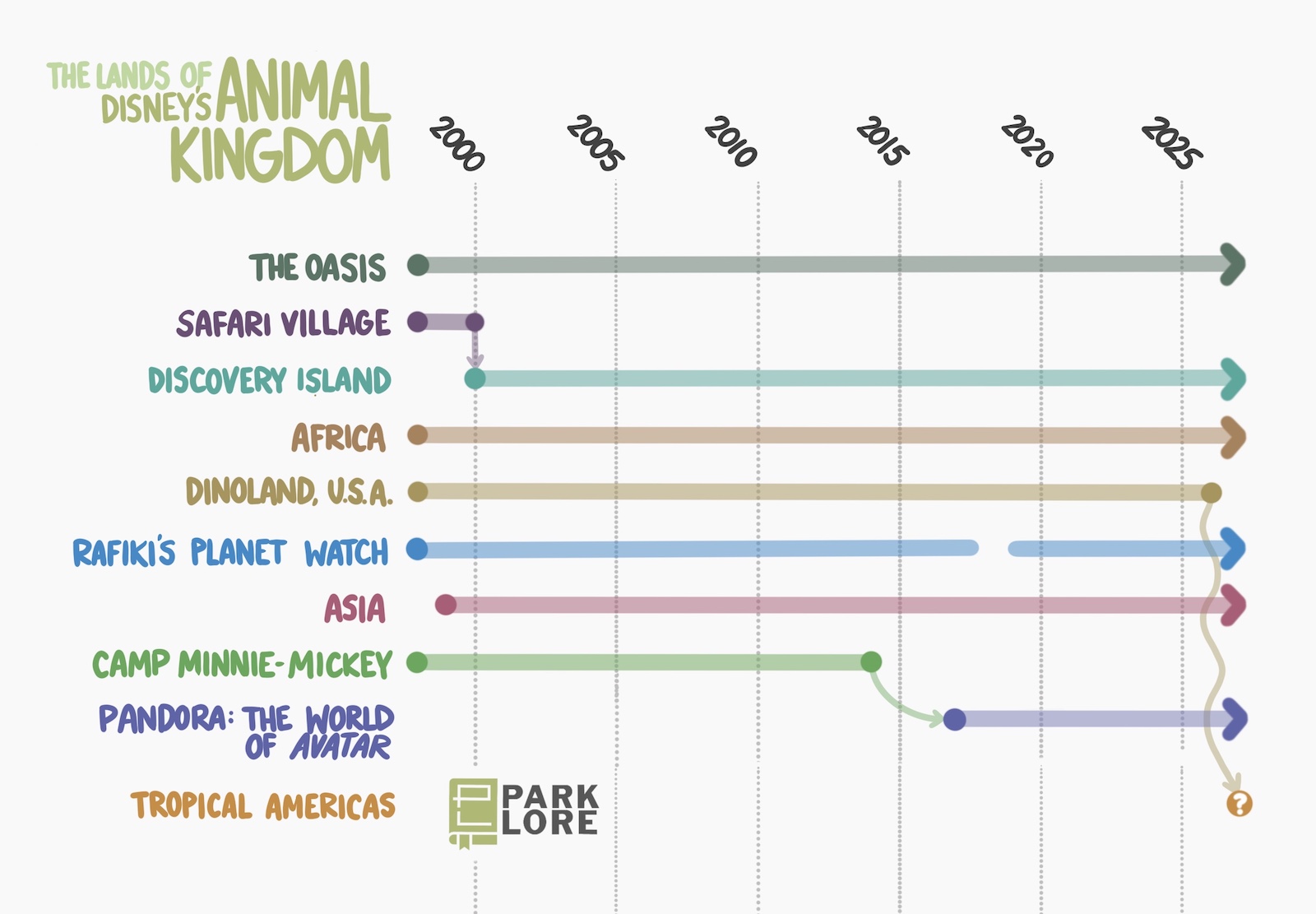
Despite fans’ distaste at the concept of a permanent land themed to a PG-13, 20th Century Fox action film, designers beautifully made Avatar fit the brief, creating a visceral, all-encompassing, gorgeous alien planet of bioluminescent life and research. Pandora invites us to become eco-tourists, marveling at the flora and fauna of Pandora, connecting with its native Na’vi people’s traditions and cuisine, and maybe just maybe recognizing that we should see Earth in such vivid colors, too.
Dinoland, U.S.A. has always been one of the more controversial lands in the park given that it approaches the topic of dinosaurs through the lens of their place in pop culture, told via a layered backstory that included a carnival in a fake parking lot. Fans spent decades daydreaming that it would become a “South America” land, making an obvious swap from the Lost Legend: DINOSAUR to an Indiana Jones Adventure (given that the two share nearly-identical layouts). Those fan suppositions are becoming fact, with Dinoland transforming into a Tropical Americas land, set to open in 2027.
Self-promo: before you head onward with this list, be sure to check out my Blue Sky Build-Out: Disney’s Animal Kingdom to see how I would “armchair Imagineer” this park and steer its evolution if it were up to me! Until then, read on…


